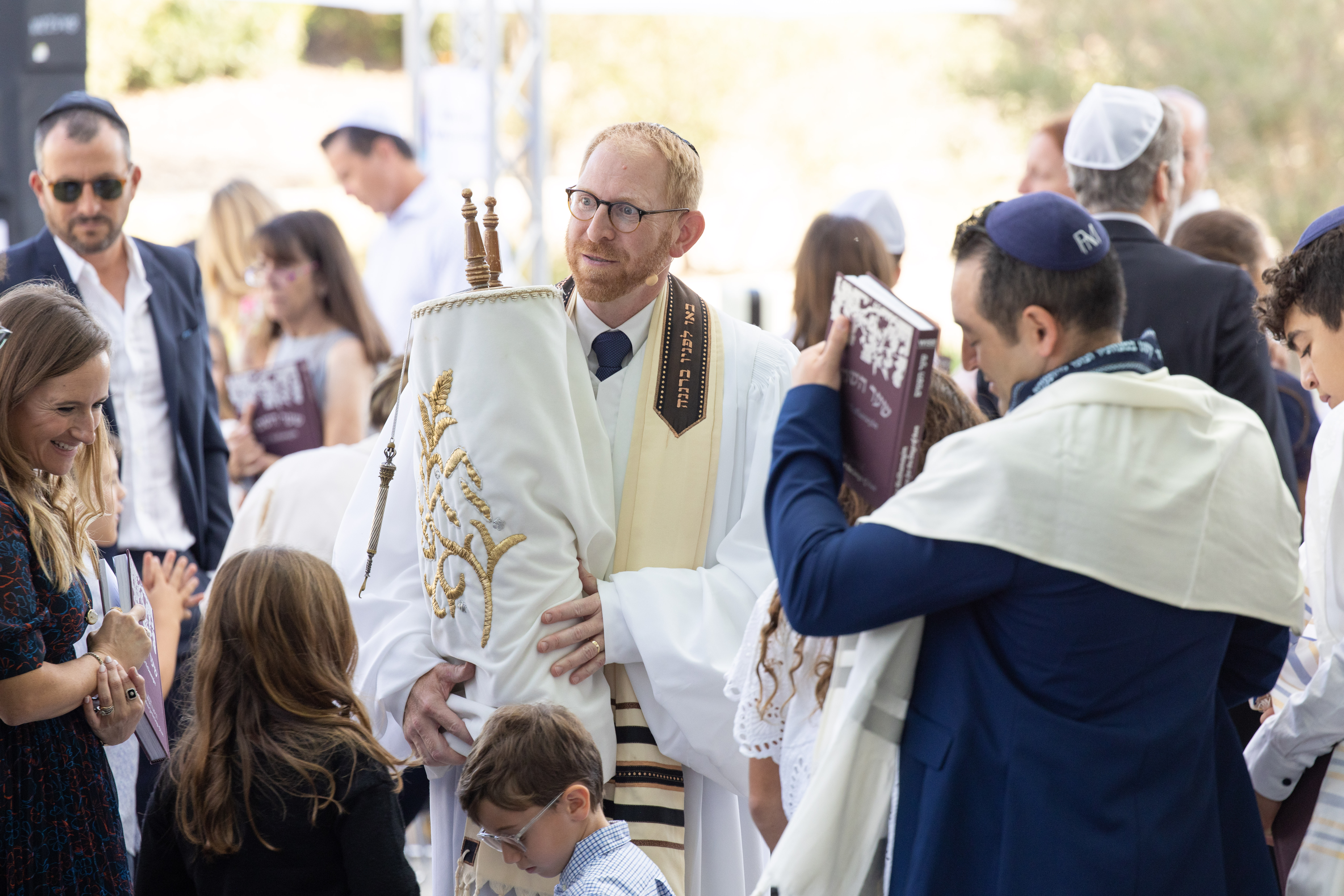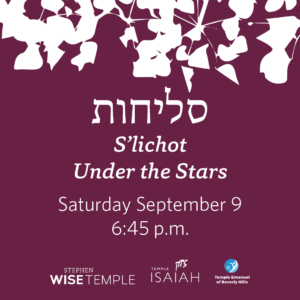
Stephen Wise Temple's Rabbi Josh Knobel walks the Torah through the congregation on Nahmias Plaza during Yom Kippur Morning services in 2022. (Photo by Stephanie Kleinman)
“Should your sins be like crimson, they can still turn white as snow. Should they be redder than dye, they can become like wool.”
—Isaiah 1:18
This Saturday night, many Jewish communities will observe the ritual of s’lichot, a special service containing prayers for forgiveness designed to prepare us for the coming Days of Awe.
While many Sephardic communities begin reciting s’lichot at the beginning of Elul, most Ashkenazi communities, in the tradition of the 11th-century Machzor Vitri, begin saying them on the Saturday night prior to Rosh Hashanah. By beginning their prayers at the conclusion of Shabbat, these communities symbolically mark that the work of t’shuvah—of repentance—represents the principal effort for the coming week.
Traditionally, these services were held in the morning, before dawn, but it became customary to arrange the first service for midnight in order to make it easier for people to attend.
One of the visual symbols associated with s’lichot is the exchange of the Torah mantles for covers made specifically for the Days of Awe. Typically white in color, these covers represent the purity that we seek through prayers for forgiveness. As we prepare for s’lichot services this Saturday night beginning at 6:45 p.m., we reflect upon the past year and consider how we might seek forgiveness, and, ultimately, t’shuvah, in the days ahead.
—Rabbi Josh Knobel

